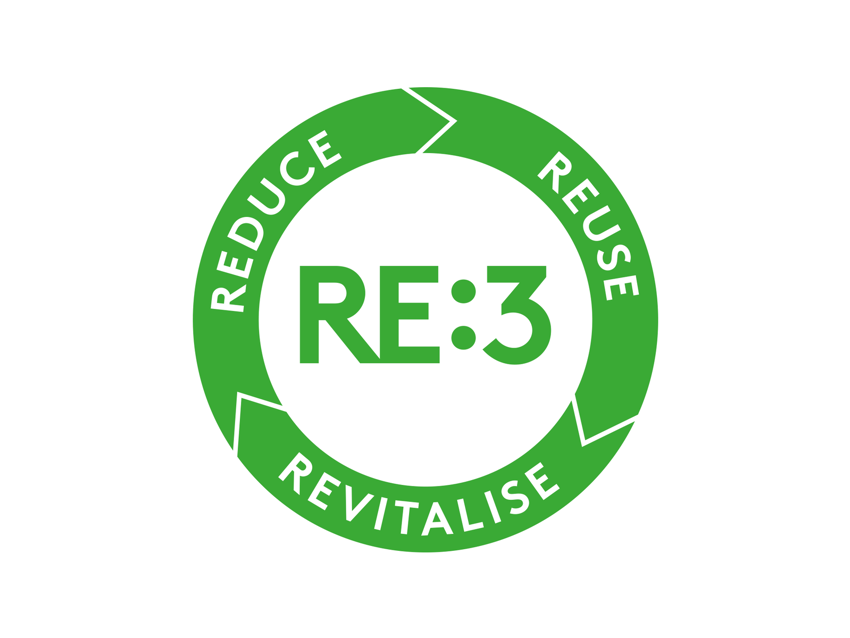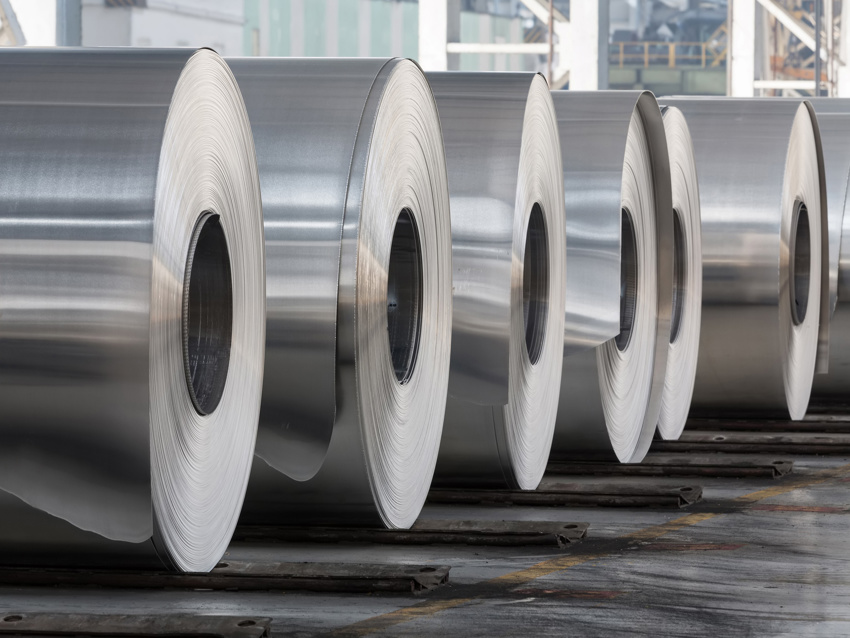RE:3 – a concept to RE:duce, RE:use and RE:vitalise
This is where we present our pioneering circularity initiatives which aim at reducing the embodied carbon footprint in HVAC installations. We have so far introduced recycled and renewably produced steel in a variety of products, with more to come, we continuously update older HVAC units to extend their service life and we install reused products in various building projects. We present these activities under RE:duce, RE:use and RE:vitalise, which together form our circularity concept called RE:3.
Operational carbon and embodied carbon
For a long time, the real estate sector has focused on, and also made great progress in, reducing the operational carbon footprint, in our case that means minimising the energy used for ventilation, heating, and cooling in buildings. However, embodied carbon, or built-in CO₂, can account for 35–50%* of total emissions in the real estate sector. This is the reason why there is an ongoing shift in the industry’s attention, reducing embodied carbon through circular materials, reuse and low-impact design is the next frontier in climate action for buildings.
* numbers from the Swedish national board of housing, building and planning and GRESB.
About people, planet, profit on our corporate site

RE:3 and circularity
RE:3 builds on the fundamentals of circularity, which can be described as the opposite to the linear approach to materials. Instead of taking, making and disposing, materials are kept in circular flows with the ultimate goal of eliminating waste. Repair, upgrade and renovation, re-use, face-lift and design for disassembly are all principles of circular economy. RE:3 focuses on three key actions:
RE:duce – reducing embodied carbon by using alternative materials and design adaptations.
RE:use – taking back products, refurbishing them and make them available to the market once again.
RE:vitalise – extending the product lifespan by making component and functionality updates on site.
Related to the above, providing maintenance and repair is also crucial from a circularity perspective, and continues alongside the advancements within RE:3.

A framework for the concept
Since embodied carbon has not traditionally been prioritised within the building sector, the RE:3 concept may need some further explanation regarding its purpose and scope. It is limited to embodied carbon and it is applies to products and the installation phase only, excluding the operational phase and energy efficiency for example.
Whenever a Swegon product carries the RE:3 symbol, it is a product that reduces the level of built-in CO2 in a building. It is important to note that the RE:3 symbol is not a certification, it is a tool for helping our customers identify products aligned with the RE:3 concept.
RE:duce - we are on our way
This aspect of the RE:3 concept focuses on reducing the use of materials with high levels of embodied carbon. For example, this can be achieved by utilising renewable energy sources during manufacturing, designing products which require less resources to make and/or by increasing the amount of recycled or alternative materials.
Learn more about RE:DUCE here

RE:use - aiming for industrial scale reuse of indoor climate products
When renovating, it is still common practice to discard fully functional HVAC solutions, not because they are broken, but because requirements have changed. While building materials like bricks, windows or doors are often reused, more complex items like HVAC products are rarely considered.
With RE:use, Swegon takes an industrial scale approach to reusing HVAC products. By taking back previously installed units, and carefully upgrading and quality-assuring them, products that perform like new and come with the same warranty can be offered to the market. The key difference is a carbon footprint reduction by up to 95%.
To make industrial-scale reuse a reality, our industry needs to shift mindset. We’re committed to leading that change.Caroline Jacobsson, Director Circular Business, Swegon Group emphasising that collaboration across the value chain is essential, alongside suppliers taking responsibility to drive change.
Ongoing pilot projects
RE:use is already launched in selected markets and we are actively participating in pilot projects elsewhere to establish scalable, reliable processes for reuse. Reuse is an approach with clear advantages compared to using products second hand.
RE:vitalise – extends the product's life cycle
As the title reveals, RE:vitalise is when products get an extended lifespan. This is done by making component updates and adding modern functionality to the products. The difference between RE:vitalise and traditional spare part replacement or routine maintenance is the projected 10-20 extra years of operational time the revitalised products get.
Within the RE:3 framework, RE:vitalise stands out as the most effective way to reduce embodied carbon, This because all products remain in place, significantly fewer and smaller transports are needed and only necessary components are newly produced, not entire units.
See this exemplified in our reference case
RE:vitalise in practise
Update and digital renovation
To exemplify, while our Swegon GOLD air handling units are renowned for their long service life, some components will naturally be worn out. While the mechanical structure may hold-up for decades, advances in information technology means the software and digital interfaces may become dated more quickly. Through easy replacement of key components and by the means of software updates, the unit is given a continued service life and is actually smarter than it was initially intended to be.
On the same note, the controls of our Swegon WISE system for demand controlled ventilation can be updated, and with that, be compatible with a the latest WISE generation platform. This update retains most of the existing hardware in place while the system is considerably modernised.